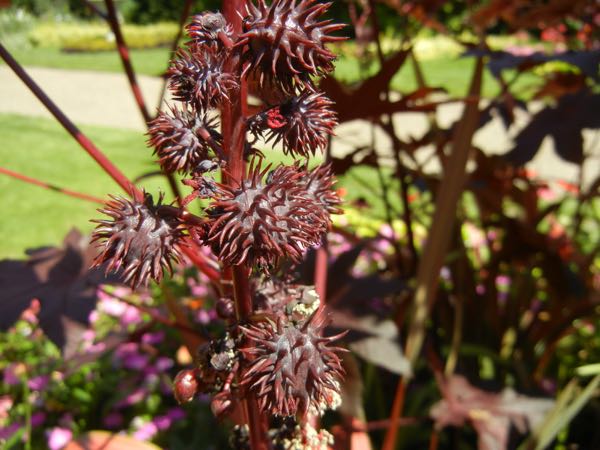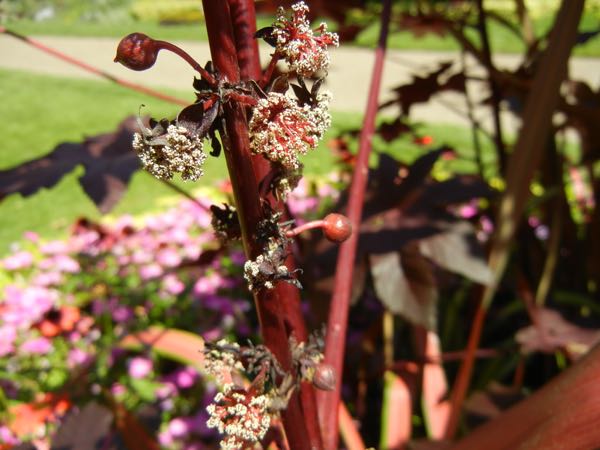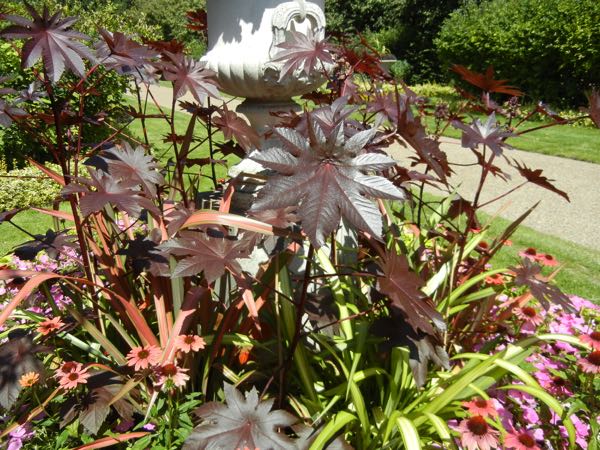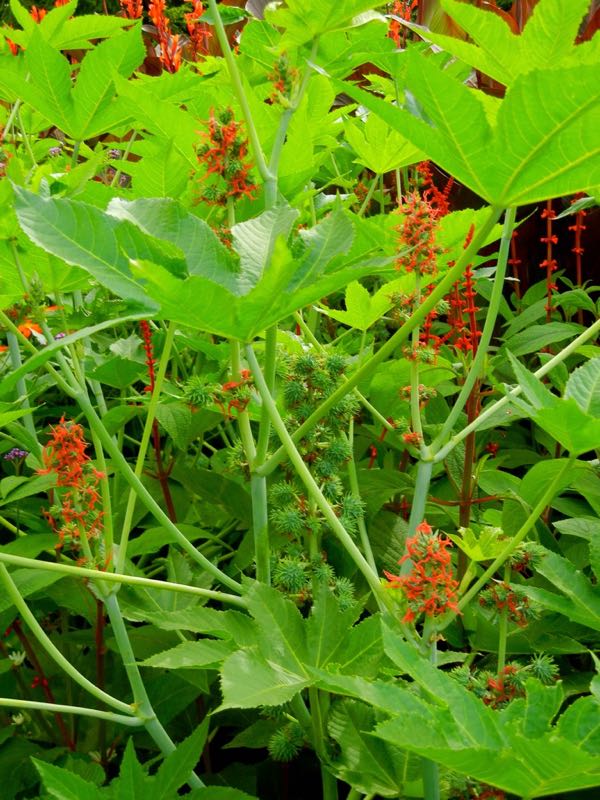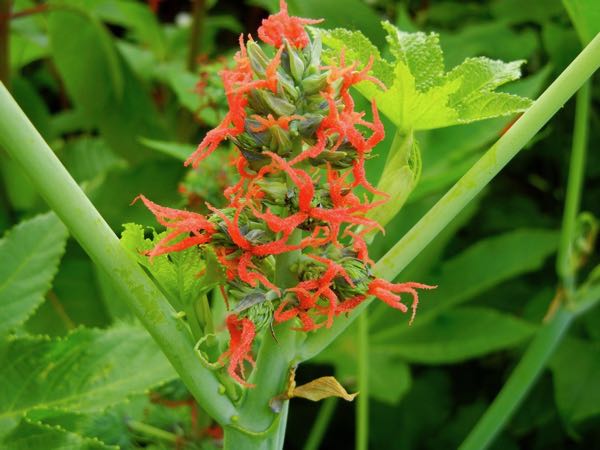Ricinus communis or The Castor Oil Plant: Beauty and Practicality Combined
Overview: Ricinus communis, commonly known as the Castor Oil Plant, is a species of flowering plant in the Spurge family, Euphorbiaceae. It is the sole species in the monotypic genus, Ricinus, and subtribe, Ricininae. The plant is characterized by its large size, fast growth, and distinct features such as palmate leaves and spiny capsules. The seeds of the castor oil plant are the source of valuable castor oil, which has both industrial and medicinal applications.
Appearance and Cultivation: The Castor Oil Plant is a large, fast-growing shrub that can reach heights of up to 10 feet. Its glossy palmate leaves initially display a reddish-purple color, later turning green. Native to the Mediterranean, East Africa, and India, it thrives in tropical and subtropical regions. In regions with cooler climates like England, it is grown as an annual and reaches a height of around 3 feet.
Cultivated Varieties:
Ricinus communis has various cultivated versions with unique attributes. These include:
- Carmencita Red: Features reddish stems, darker purplish leaves, and red seed pods. Grows to 1.5 meters as an annual plant.
- Carmencita Pink: Green variety with pink seed pods. Grows to 1.5 meters as an annual plant.
- gibsonii: Exhibits reddish leaves and veins, and bright pink/red seed pods. Grows to 1.5 meters as an annual plant.
- Impala: Smaller variety with reddish foliage and stems. Grows to 1 meter as an annual.
- Red Spire: Tall variety reaching 3 meters with reddish stems and red-bronze leaves.
- New Zealand Purple: Features deep purple-colored leaves and seed pods that turn more red as they ripen. Grows to 1.5 meters as an annual plant.
- Zanzibarensis: Another tall variety reaching 3 meters with green leaves and white midribs.
Uses and Benefits: The Castor Oil Plant serves both aesthetic and practical purposes. Its seeds, often referred to as castor beans, are used to produce castor oil. This versatile oil finds applications in lubricants, paints, plastics, and more. Additionally, the plant’s leaves have medicinal uses, particularly for liver-related conditions.
How to cultivate Ricinus communis:
To successfully cultivate the castor oil plant:
- Choose a location with full sun exposure.
- Plant it in well-drained, nutrient-rich soil.
- Start seeds indoors approximately 6-8 weeks before the last frost date.
- Transplant seedlings outdoors after they develop 2-3 sets of leaves.
- Water regularly, especially during hot weather, maintaining moist but not soggy soil.
- Apply a light, balanced fertilizer every few weeks.
- Protect plants from pests and diseases using appropriate pesticides or fungicides.
Caution: While Ricinus communis offers numerous benefits, it’s important to exercise caution due to its toxic properties. All parts of the plant, including the seeds, leaves, and sap, are harmful if ingested. Symptoms may appear as late as a day and a half after ingestion. Handle the plant with care and avoid ingestion or chewing of the seeds.
In conclusion, Ricinus communis, or the castor oil plant, stands out for its captivating appearance and practical applications. With proper cultivation and caution, it can be a valuable addition to gardens, offering both aesthetic beauty and the potential for medicinal benefits.

